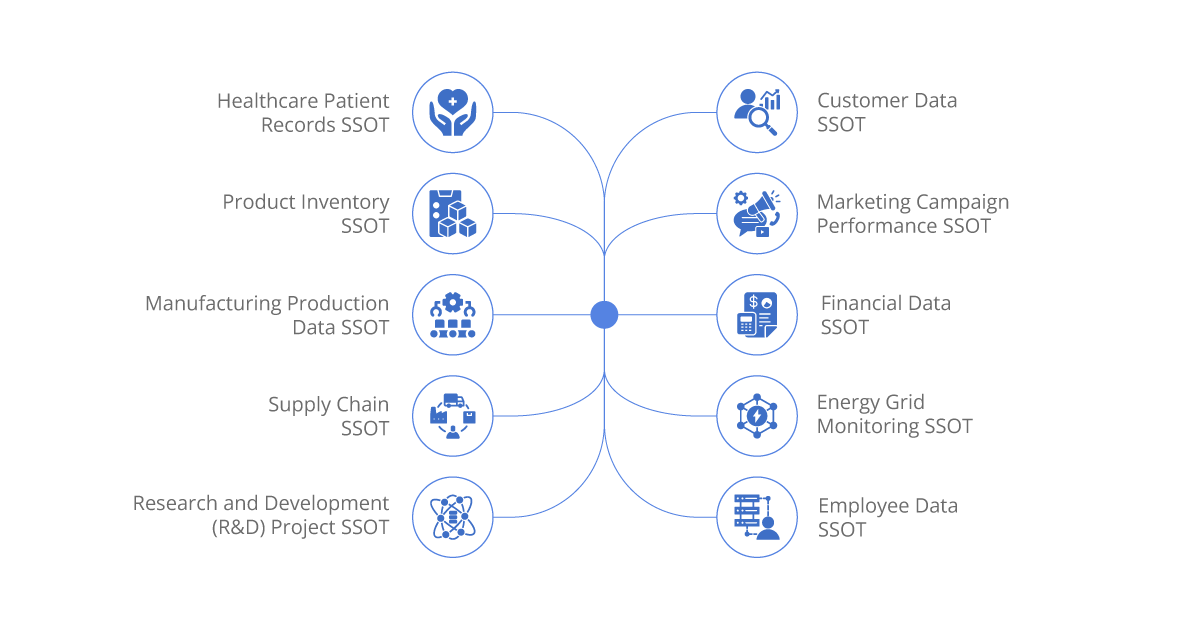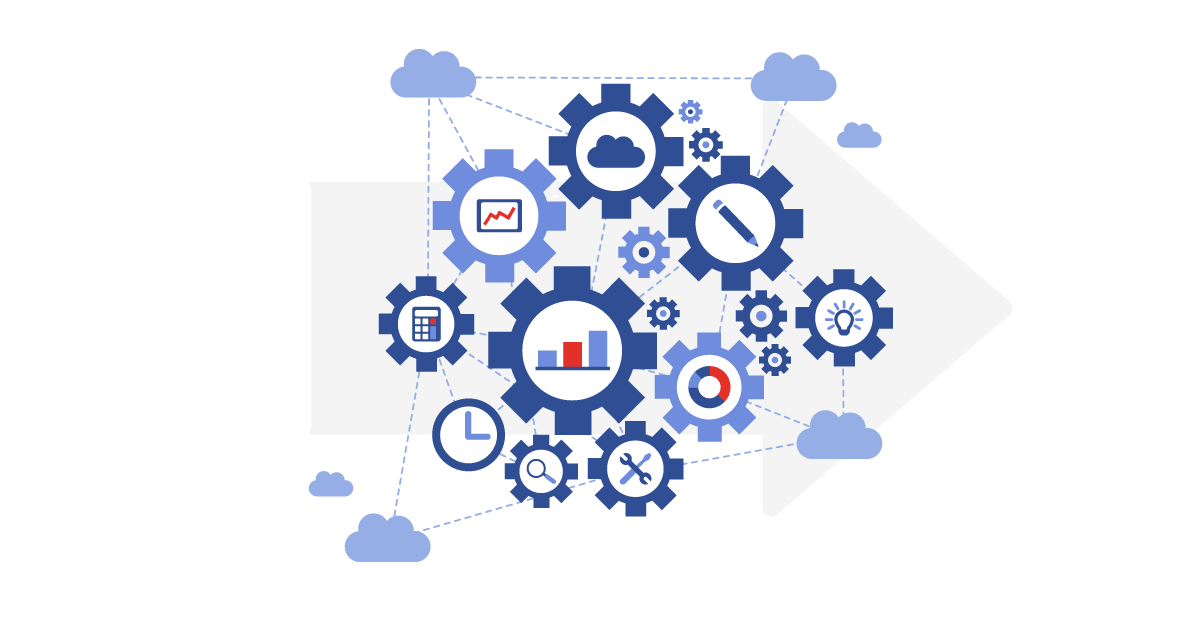In a data-driven world, businesses rely on accurate and reliable information to make informed decisions and drive growth. However, many organizations struggle with data scattered across multiple systems and applications, resulting in data silos and inconsistencies. To overcome these challenges and achieve a single source of truth (SSOT), integration plays a pivotal role. By seamlessly connecting disparate systems and enabling data synchronization, integration empowers businesses to have a unified view of their data, ensuring its accuracy, consistency, and accessibility.
Aonflow iPaaS – Free for First 3 Months!
Build and run up to 1,500 transactions monthly with no cost. No payment info needed!
Understanding A Single Source of Truth for Data
A Single Source of Truth (SSOT) for data refers to a unified and authoritative data repository that serves as the primary reference for an organization. It is a concept that ensures all stakeholders within an organization have access to consistent, accurate, and up-to-date data across different systems, departments, and applications. The SSOT acts as the trusted source from which decisions are made, reports are generated, and insights are derived.
The SSOT eliminates data silos, where different departments or systems maintain their versions of data, leading to inconsistencies, duplications, and discrepancies. By establishing a single, centralized source of truth, organizations can enhance data integrity, improve decision-making processes, and enable better collaboration and efficiency.
In an SSOT, data is harmonized and synchronized through integration, ensuring that updates or changes made in one system are reflected in all connected systems in real time. This eliminates the need for manual data reconciliation or cross-referencing, reducing errors and increasing productivity.
The SSOT provides a holistic view of the organization’s data, enabling comprehensive analysis, reporting, and business intelligence. It ensures that all stakeholders have access to accurate and consistent information, fostering trust, alignment, and better decision-making.
Implementing an SSOT requires a robust integration strategy, data governance practices, and the use of appropriate technologies, such as integration platforms and data management tools. With a well-established SSOT, organizations can harness the power of their data, unlock valuable insights, and drive successful outcomes.
Examples of a Single Source of Truth for Data
Examples of Single Source of Truth (SSOT) for data can vary depending on the industry and organization. Here are a few examples across different sectors:
Customer Data SSOT: In many businesses, customer data is scattered across multiple systems such as CRM, marketing automation, support ticketing, and e-commerce platforms. By integrating these systems and establishing an SSOT for customer data, organizations can have a comprehensive view of customer interactions, preferences, and purchase history. This unified customer profile enables personalized marketing, targeted customer support, and a holistic understanding of customer behavior.
Product Inventory SSOT: Retailers and e-commerce companies often face challenges in maintaining accurate and up-to-date inventory information due to multiple sales channels and warehouse locations. By integrating various systems, such as point-of-sale (POS), inventory management, and order fulfillment, organizations can establish an SSOT for product inventory. This ensures real-time visibility into stock levels, reduces the risk of overselling or stockouts, and enables efficient order management.
Financial Data SSOT: Organizations dealing with financial data, such as banks or financial institutions, need a reliable SSOT for financial information. By integrating core banking systems, transaction databases, accounting software, and reporting tools, they can establish an SSOT for financial data. This provides a comprehensive view of financial transactions, balances, and performance metrics, enabling accurate financial reporting, risk management, and regulatory compliance.
Supply Chain SSOT: In industries with complex supply chains, integrating systems such as supplier management, procurement, logistics, and inventory can establish an SSOT for supply chain data. This allows organizations to track and manage the movement of goods, optimize inventory levels, streamline procurement processes, and enhance supply chain visibility and collaboration.
Employee Data SSOT: Human resources departments often deal with employee data stored in various systems like HRIS (Human Resource Information System), payroll, benefits administration, and performance management. By integrating these systems and establishing an SSOT for employee data, organizations can ensure accurate employee records, streamlined HR processes, and consistent reporting. This enables efficient onboarding, payroll processing, talent management, and compliance with labor regulations.
Healthcare Patient Records SSOT: In the healthcare industry, integrating electronic health records (EHR) systems, laboratory systems, and medical imaging systems can establish an SSOT for patient data. This centralizes patient information such as medical history, test results, prescriptions, and imaging reports. Having a comprehensive and unified patient record helps healthcare providers deliver coordinated care, ensure accurate diagnoses, and improve patient safety.
Marketing Campaign Performance SSOT: Marketing teams often leverage multiple platforms and channels to execute campaigns, including email marketing, social media, digital advertising, and customer relationship management (CRM) systems. Integrating these systems and establishing an SSOT for campaign performance data allows marketers to track and analyze key metrics, such as conversion rates, engagement levels, and ROI. This enables data-driven campaign optimization, effective budget allocation, and personalized customer experiences.
Manufacturing Production Data SSOT: In the manufacturing sector, integrating production planning systems, equipment monitoring systems, quality control systems, and enterprise resource planning (ERP) systems can establish an SSOT for production data. This provides real-time visibility into production schedules, machine performance, quality metrics, and inventory levels. An SSOT for production data helps optimize production processes, minimize downtime, improve product quality, and ensure efficient resource allocation.
Energy Grid Monitoring SSOT: Energy companies, particularly those involved in power generation and distribution, can establish an SSOT for grid monitoring data. By integrating systems such as supervisory control and data acquisition (SCADA), metering systems, outage management, and asset management, organizations gain a unified view of the energy grid’s performance, load patterns, equipment status, and outage information. This enables effective grid management, proactive maintenance, and optimized energy distribution.
Research and Development (R&D) Project SSOT: Organizations engaged in research and development activities often need to integrate project management systems, document repositories, collaboration tools, and data analytics platforms. Establishing an SSOT for R&D project data provides a centralized repository for project plans, research findings, experimental data, intellectual property, and collaboration records. This enables effective project tracking, knowledge sharing, and streamlined innovation processes.
These are just a few examples, but the concept of an SSOT can be applied to various types of data within an organization, depending on its specific needs and goals. The key is to identify the critical data domains and integrate the relevant systems to establish a unified, authoritative source of truth that serves as a foundation for accurate decision-making, operational efficiency, and improved business outcomes.
Aonflow is the leading integration platform.
You can kick-start by integrating your first-ever workflow in just a matter of minutes.
The Challenges of Data Silos
Data silos are isolated repositories of data that exist within different departments or systems, limiting data sharing and collaboration. For example, sales data may reside in the CRM system, while financial data is stored in the ERP system. This fragmentation creates challenges in decision-making, as stakeholders lack a holistic view of the business. Integration breaks down these data silos by connecting disparate systems, enabling data flow and collaboration between departments.
Consider a use case where a company integrates customer data from various systems such as CRM, support ticketing, and marketing automation. By connecting these systems, they gain a comprehensive view of customer interactions, allowing them to deliver personalized experiences, streamline customer service, and optimize marketing campaigns.
Streamlining Business Processes with Integration
Integration not only facilitates data sharing but also streamlines business processes. Process integration involves connecting different systems and applications to automate workflows and enable seamless data exchange. By synchronizing data in real time, businesses can achieve operational efficiency and improve productivity.
For instance, integrating a CRM system with an ERP system for order management eliminates manual data entry, reduces errors, and ensures accurate order fulfillment. When a sales representative closes a deal in the CRM, the integration automatically updates the inventory and triggers order processing in the ERP system. This integration enables efficient order fulfillment and improves customer satisfaction.
Enhancing Data Quality and Consistency
Data quality and consistency are vital for decision-making and ensuring accurate reporting. Integration plays a crucial role in maintaining data integrity by avoiding duplicate and conflicting data across systems. When data is integrated, it can be validated, cleansed, and transformed to adhere to predefined rules and standards.
Consider the integration of HR and payroll systems in an organization. By connecting these systems, employee data can be seamlessly synchronized, ensuring consistency in employee records, salary information, and benefits. This integration eliminates manual data entry errors and reduces administrative overhead, resulting in accurate payroll processing and improved employee satisfaction.
Empowering Analytics and Business Intelligence
The integration enables businesses to unlock the true potential of their data for analytics and business intelligence. By integrating data from multiple sources, organizations can create a unified and comprehensive view of their data, allowing for more accurate analysis and informed decision-making.
For example, integrating sales data from CRM systems with marketing data from automation platforms enables businesses to analyze the effectiveness of marketing campaigns, measure customer acquisition costs, and identify trends in customer behavior. This integrated data provides valuable insights for strategic planning and optimizing marketing initiatives.
Ensuring Security and Compliance
Data integration also plays a vital role in ensuring the security and compliance of data. Integration platforms provide secure channels for data transmission, encrypting data in transit to protect it from unauthorized access or tampering. This is particularly crucial when integrating sensitive data such as personal information or financial records.
Consider the integration of e-commerce platforms with payment gateways. By securely integrating these systems, businesses can ensure that customer payment information is transmitted safely, reducing the risk of data breaches or fraud. Integration also helps organizations comply with data protection regulations and industry standards, enhancing trust and credibility.
Choosing the Right Integration Platform
Selecting the right integration platform is essential for successful data integration and achieving an SSOT. When choosing an integration platform, businesses should consider factors such as scalability, flexibility, ease of use, and the ability to connect with a wide range of systems and applications.
For instance, iPaaS offers a cloud-based solution that provides pre-built connectors, data transformation capabilities, and workflow automation. It enables businesses to integrate both cloud-based and on-premises systems with ease. Evaluating different integration platforms based on specific business requirements is crucial to ensure seamless data integration and a reliable SSOT.
Conclusion
Integration plays a critical role in achieving a single source of truth for data, enabling businesses to make informed decisions, streamline processes, and drive growth. By breaking down data silos, integrating systems, and ensuring data accuracy and consistency, businesses can unlock the full potential of their data.
The integration empowers analytics, enhances data quality, and supports security and compliance requirements. As businesses embrace a unified data environment, they position themselves for success in the dynamic and competitive landscape of today and the future. Prioritizing integration is essential for organizations that strive for better decision-making and a truly data-driven approach.
Aonflow iPaaS – Free for First 3 Months!
Build and run up to 1,500 transactions monthly with no cost. No payment info needed!


